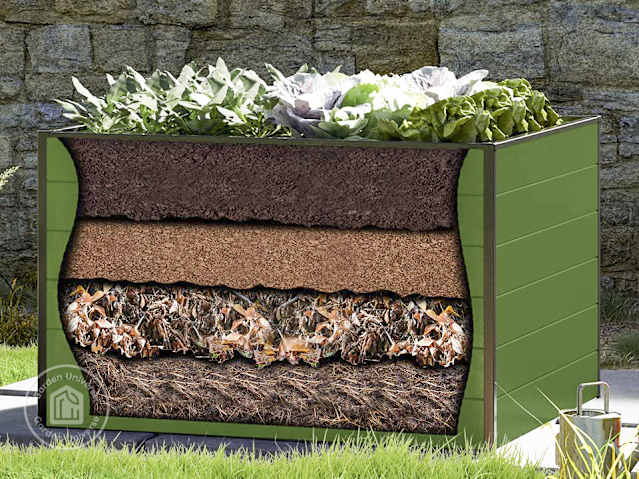
- Height 2.53 ft.
- Rectangular
Raised garden beds are a fantastic way to grow healthy plants, whether you're a seasoned gardener or just starting. The secret to their success lies in how you fill them. Properly layering and choosing the right materials can lead to better drainage, nutrient availability, and thriving plants. Let’s dive into the details to help you create the perfect raised bed.

Properly filling a raised garden bed is essential for ensuring healthy plants and long-lasting results. From creating layers to selecting the right materials, this step will set the foundation for a thriving garden.
Start with a layered approach to ensure optimal drainage and fertility.
Base Layer (10-20%): Use coarse organic materials such as logs, branches, or straw. These decompose slowly, provide aeration, and help with drainage. Logs also retain moisture, reducing the need for frequent watering.
Middle Layer (30-40%): Add partially decomposed organic matter such as leaves, grass clippings, or kitchen scraps. This layer enriches the soil with nutrients as it breaks down over time.
Top Layer (40-50%): Finish with a rich blend of topsoil and compost. Plant roots will grow and thrive in this nutrient-rich surface layer.
A balanced mix is crucial for successful gardening.
Topsoil: Provides structure, supporting roots and holds moisture. Choose clean, weed-free topsoil for best results.
Compost: Supplies essential nutrients like nitrogen and potassium, promoting healthy growth. Use organic compost for eco-friendly gardening.
Aerating Materials: Add perlite, vermiculite, or coarse sand to improve drainage and prevent soil compaction. These materials help roots breathe and avoid waterlogging.
Optional Additives: Consider organic fertilizers, aged manure, or bone meal to enhance nutrient levels, especially for heavy-feeding plants like tomatoes.
The foundation of a thriving raised garden bed is its soil. A balanced mix of nutrients, proper drainage, and moisture retention ensures that your plants grow strong and healthy. Choosing or creating the right soil mix will save you time, effort, and potential gardening headaches.
Filling a raised garden bed doesn’t mean you need to use soil for the entire depth. In fact, only the top half of the bed requires nutrient-rich topsoil, while the bottom half can be layered with organic materials like sticks, leaves, and cardboard. These layers improve drainage, encourage decomposition, and save on soil costs.
Let’s calculate the topsoil needed for the Standard CHRISTINA model (3.9 ft L x 3.9 ft W x 2.5 ft H):
To calculate the soil volume for the top half:
Multiply the Length × Width × (1/2 Height) of your raised garden bed:
3.9 ft × 3.9 ft × (2.5 ft ÷ 2)
= 3.9 × 3.9 × 1.25
= 19 cubic feet of soil.
Topsoil is often sold in cubic yards.
To convert cubic feet to cubic yards: 19 cubic feet ÷ 27 = 0.7 cubic yards.
Using only the top half of your bed for soil is a cost-effective and eco-friendly practice. The bottom layers, made of organic materials, decompose over time, enriching the soil naturally. This method also reduces the weight of your bed and ensures proper drainage, creating optimal conditions for plant growth.